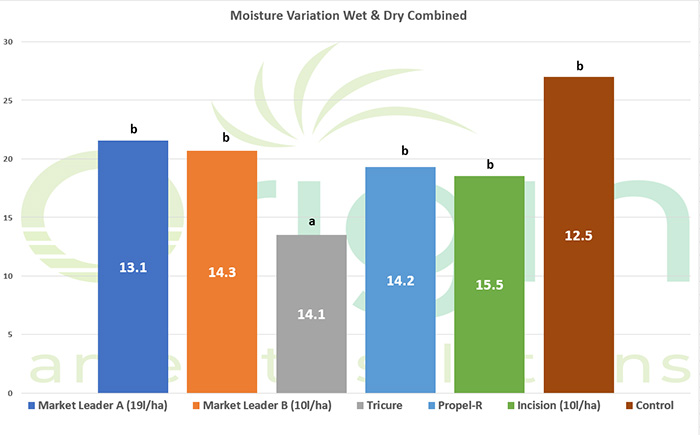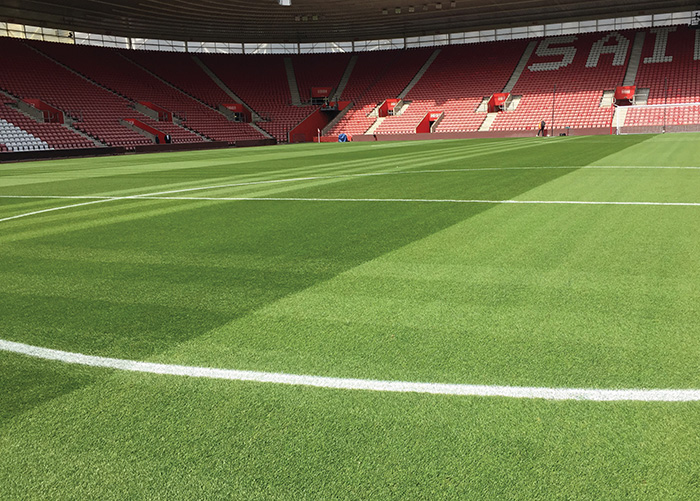Combating Summer Stress In Turfgrass

By Kelly-Marie Clack, Origin Amenity Solutions Agronomy Technical Manager.
Turfgrass is subjected more frequently to environmental extremes including heat, drought or excessive rainfall and humidity which can impact on surface performance. When we experience excessive temperatures over a period of time photosynthesis reduces and the plant cannot produce the energy it requires for optimum growth. As turfgrass managers we aim to produce consistent and well-groomed surfaces that look exceptional but most importantly perform. The basic management practises we carry out can also have adverse effects on the quality of the turfgrass. It is the combination of these mechanical stresses and environmental stresses with will lead to the decline of turf health and surface performance.
What Can We Do To Reduce Summer Stress On Turfgrass?
- Increase height of cut – it’s not all about the speed. Surfaces that are true and smooth perform well and look good. At low HOC the turf is more likely to wilt leading to uneven surfaces. Hand cut if possible and mow only when required.
- Irrigate in the morning rather than early evening to avoid leaf wetness overnight. High humidity and leaf wetness is likely to lead to disease outbreaks.
- Reduce rolling and only roll if conditions are conducive.
- Avoid verticutting into the crown.
- Reduce the amount of times per week you cut your perimeter (tidy up lap).
- Only brush if required and not daily.
- Use a pedestrian aerator such as a procore to avoid heavy machinery on the surfaces.
- Reduce thatch build up in the upper profile through good aeration and top dressing practices.
- Accurate water management will reduce summer stress and hand watering areas with low moisture readings is essential. A surfactant should be used to reduce hydrophobicity in the soil and ensure moisture consistency across the playing surface.
- Apply Nitrogen little and often for optimum plant health and recovery from play. Potassium helps to maintain turgor pressure in the cells of the plant, resulting in a positive influence on drought tolerance.
- Apply plant biostimulants; they contain substances and/or micro-organisms whose function when applied to plants or the rhizosphere, is to stimulate natural processes to enhance/benefit nutrient uptake, nutrient efficiency, tolerance to abiotic stress, and plant quality i.e. seaweed, carbon-based fertilisers, humic acid, fulvic acid, molasses.
- Over seed with stress tolerant grass species such as fescue, bent and rye.
- Fungicides form part of an Integrated Turf Management plan during high disease pressure situation. Monitor weather conditions and record disease outbreaks so you can form an Integrated Pest Management program for your site.
Origin Amenity Solutions (OAS) comprises four market leading brands, Headland Amenity, Rigby Taylot, Symbio and Turfkeeper.com. We offer a range of products to help turfgrass cope and recover from summer stress. These include:
- Wetting agents to optimise soil moisture and turf health
- Biostimulants to improve tolerance to abiotic stresses and turf quality
- Nutrients to ensure healthy plants and recovery from play
- Organo-mineral fertiliser high in humic acid to promote a healthy soil and healthy plant.
A summer surfactant trial carried out at the OAS Turf, Science and Technology Research Centre showed excellent consistency in soil moisture and prevention of localised dry patch when using OAS technology, during extreme drought conditions.

Full trial details are available in the OAS Throws trial report. Please ask for a copy.

For more information or to speak to a technical sales specialist call 0800 138 7222
or email This email address is being protected from spambots. You need JavaScript enabled to view it.
Click the article to enlarge it.











































